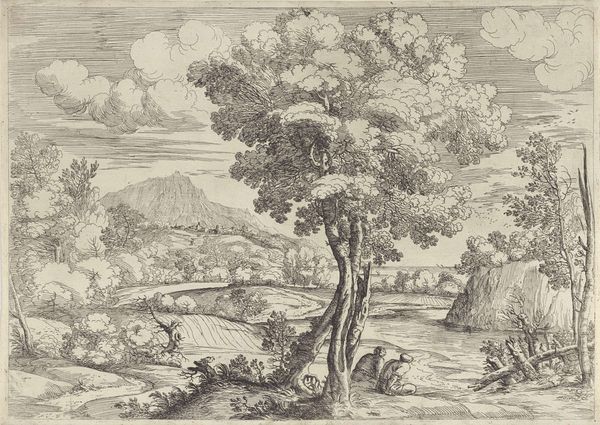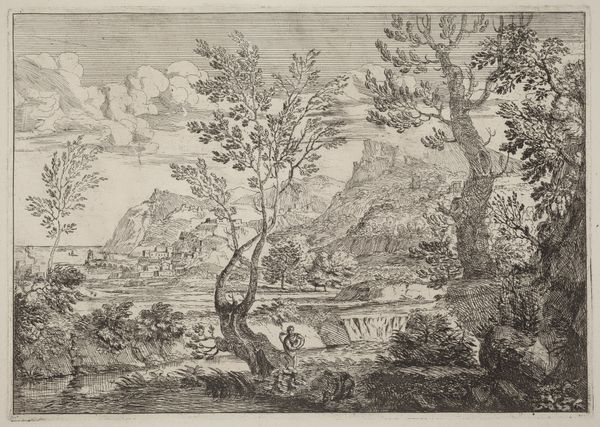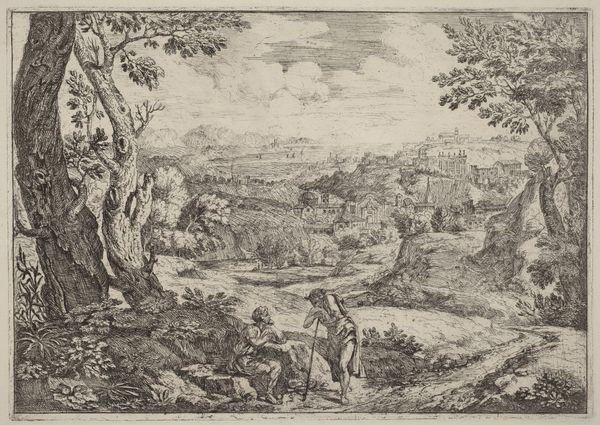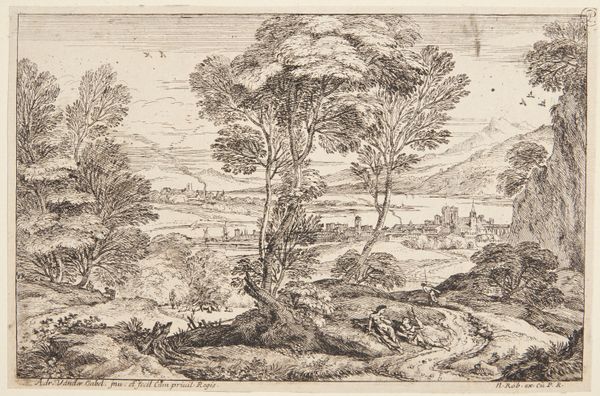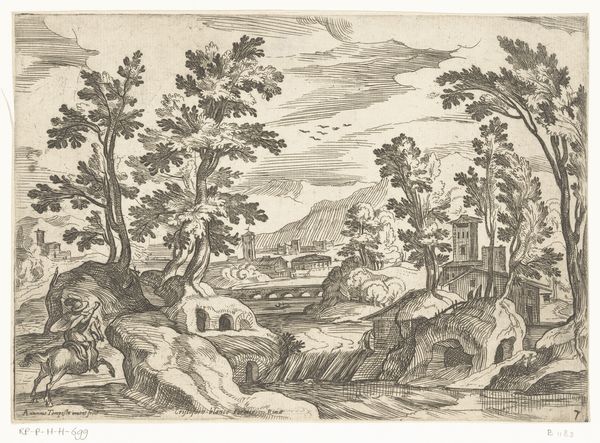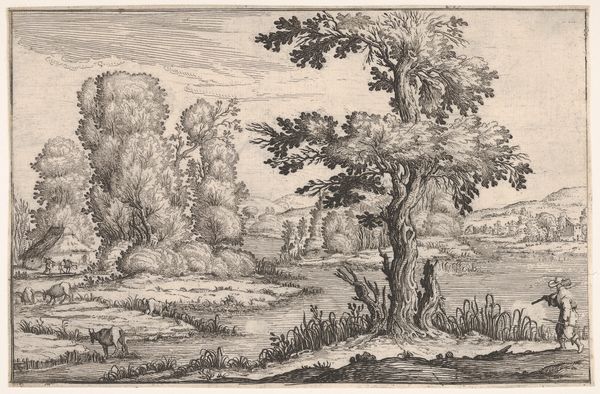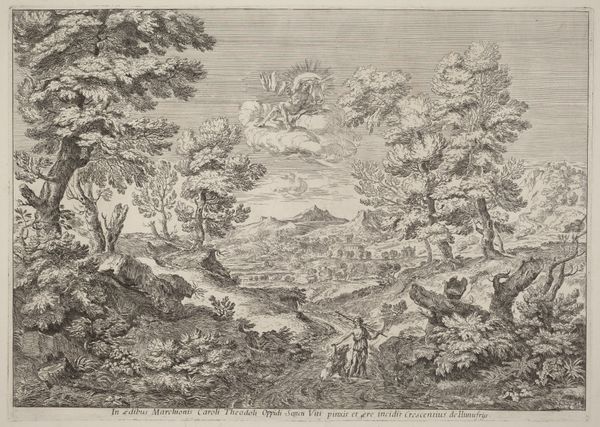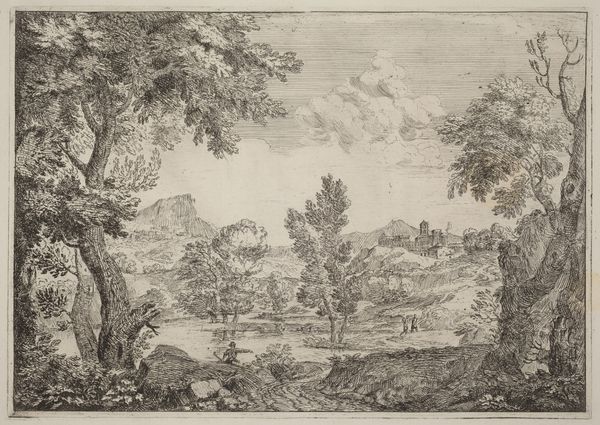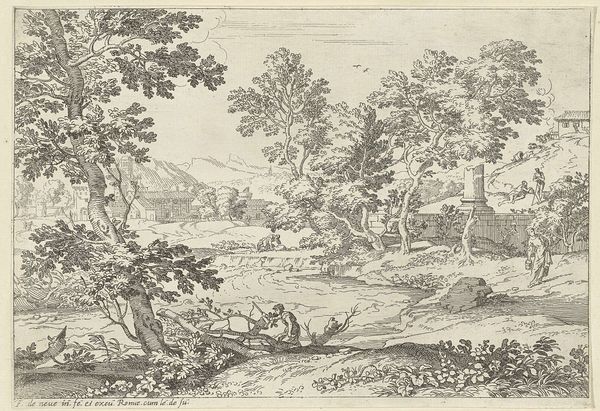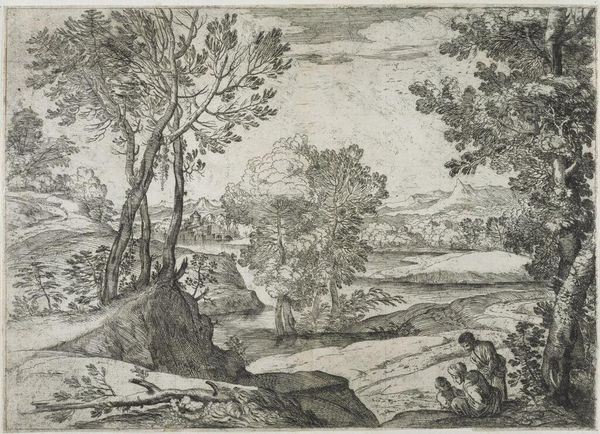
drawing, print, etching
#
drawing
#
baroque
# print
#
etching
#
landscape
#
figuration
Dimensions: Sheet (Trimmed): 10 7/8 × 15 1/4 in. (27.7 × 38.8 cm)
Copyright: Public Domain
Curator: Before us, we have Giovanni Francesco Grimaldi’s etching from 1643, "A family seated alongside a river," housed right here at the Metropolitan Museum of Art. Editor: It feels so peaceful. The composition really draws your eye back into the landscape with these elegantly placed trees directing our sightline towards the mountains in the background. The light, even though it's created by these fine lines, evokes a kind of pastoral serenity. Curator: Exactly! Grimaldi often included such figures in his landscapes. Here, a small family—perhaps travelers—are positioned on the riverbank. Families along riverbanks evoke themes of origin and connection to place and nature, especially in seventeenth-century landscape art. Editor: And there's something almost classical in its structure, right? This foreground, that middle ground of the river winding between the hills and finally this distant mountainous horizon... He's really crafting a sense of depth with subtle value changes. It is really elegant. Curator: Yes. Notice how those distant mountains, with their crisp lines, pull forward the story, echoing perhaps an origin and aspiration of the characters and our memory of landscape as a sign of power. How does nature participate? Editor: Well, this baroque treatment definitely reminds you nature has this overpowering presence. Grimaldi's marks do make it feel present and active. You know what else I love is this kind of dynamic interplay between order and disorder that Grimaldi has brought in here; look at the jagged rocks up front compared to this measured, sweeping river bend. Curator: It’s fascinating to think about how he transforms that inherent natural tension into an ideal vision of harmony through design and arrangement of landscape elements. Considering the art of the era and baroque elements of symbolism, it is less naturalistic. Editor: So true. The material simplicity of it—just etched lines—allows the viewer to project all sorts of narratives onto it. In any case, I love that interplay that draws us in for close inspection. Curator: Yes, a dance that balances design and interpretation to draw emotion and understanding for centuries. A perfect demonstration of our memory in imagery and the art in meaning. Editor: I appreciate the restraint and balance that he brings here!
Comments
No comments
Be the first to comment and join the conversation on the ultimate creative platform.

